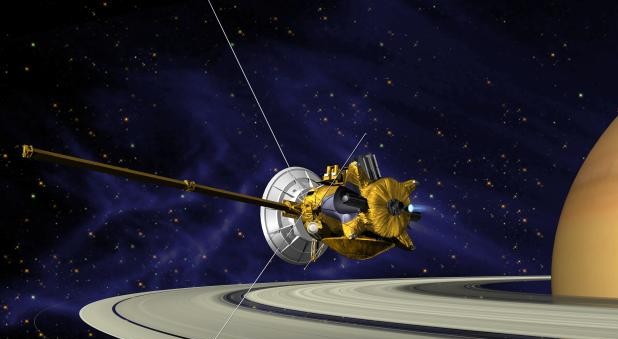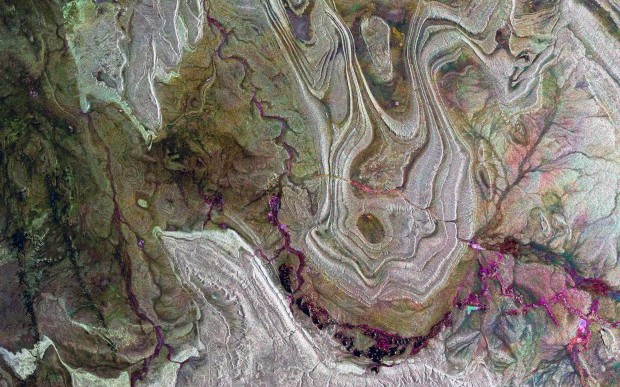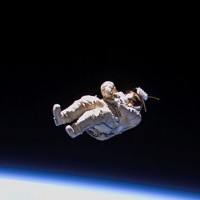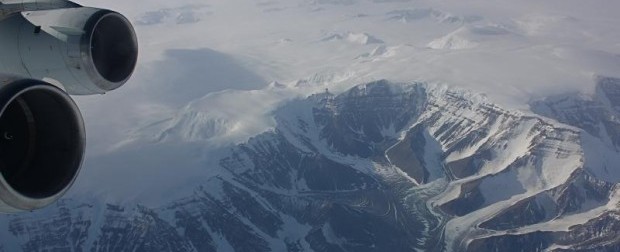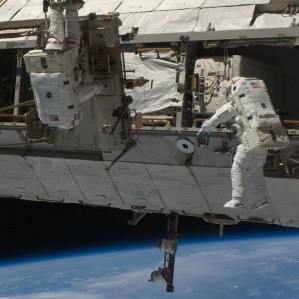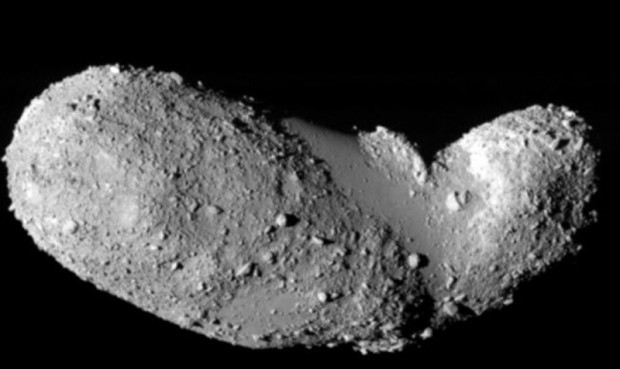he Cassini spacecraft has detected atmospheric oxygen on Rhea, a rocky, icy moon orbiting Saturn. 950 miles in diameter (less than half that of our moon), the tiny world is covered with water ice, which likely produces free oxygen as it is bombarded with charged particles from the magnetosphere of its parent planet, Saturn.
Read More »Earth & Space
Mystery image: animal, vegetable, extraterrestrial?
A slime mold attacking bacteria in a petri dish? Marbling on the endpapers of a rare first edition of Galileo's Starry Messenger? Methane storms on one of the Jovian moons? Answer after the jump.
Read More »Space comic opera: the adventure of SuitSat
In the space tourism era, with CEOs spending millions to be hoisted into the heavens, he was the first true empty suit in space.
Read More »The coming nanosatellite swarm
NASA's latest nanosatellites seek answers to questions about the place of life in the universe�at a very small scale.
Read More »Heavy weather around Hartley 2
Pelted with snow, NASA's probe captured images of the very active comet Hartley 2 on its November 4 flyby.
Read More »SETI keeps looking up
The search for extraterrestrial life is serious science: its methods are precisely documented, its results painstakingly peer-reviewed. But at the same time it�s a field with curious standards when it comes to �advances.�
Read More »NASA’s Icebridge: imaging the abyss
Researchers with NASA's Icebridge campaign are completing their fourth tour of flights over the polar regions to image ice sheets and glaciers in Antarctica and Greenland. The places they measure and scan are crucial to our understanding of global climate�and forbiddingly hostile as well.
Read More »Printing out the orbital infrastructure
3-D printing is going viral. With 3-D fabrication technology at for the desktop, for LEGOs, and for nanoscale materials, it was only a matter of time before the paradigm found its way into space�and corporate science fiction. But this promising technology still has to prove itself in terrestrial infrastructure first.
Read More »Dust-laden Hayabusa returns to Earth
IN 2005, the Japanese probe Hayabusa made its rendezvous with Itowaka, a five-hundred-meter long, sausage-shaped asteroid whose circular orbit intersects that of Earth. Yesterday, Japan's space agency announced that the probe had collected the first material ever gathered from an asteroid and delivered successfully to Earth.
Read More »How to paint a fireball in the sky
"Some flashes of lambent light, much like the aurora borealis, were first observed on the northern part of the heavens....as soon as the meteor emerged from behind the cloud, its light was prodigious."
Read More » Gearfuse Technology, Science, Culture & More
Gearfuse Technology, Science, Culture & More
